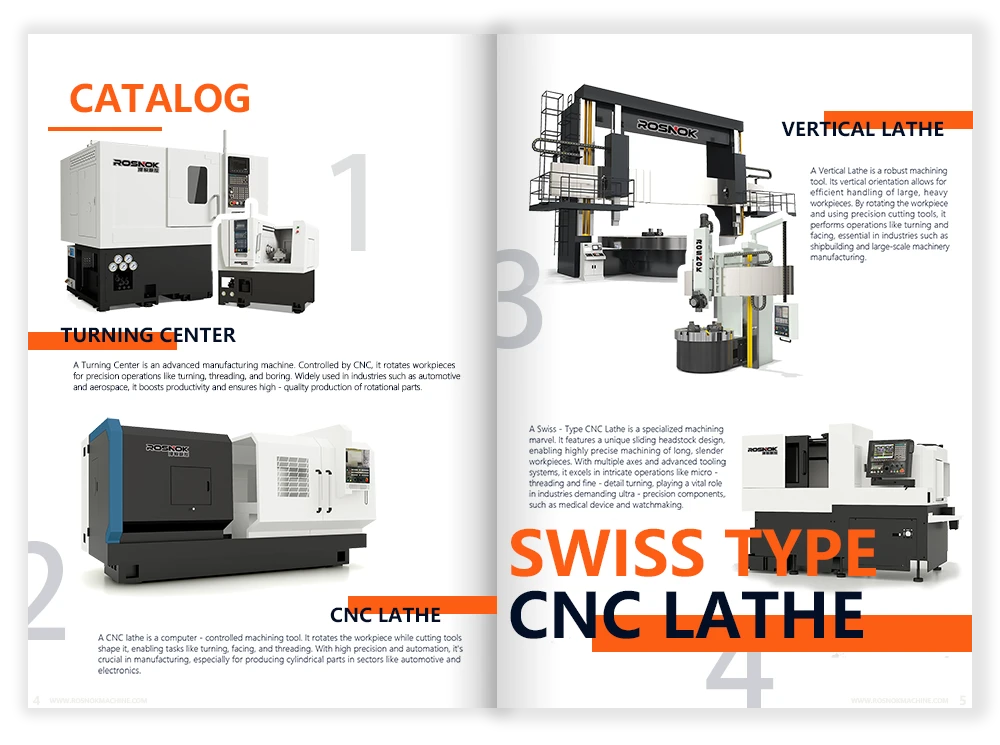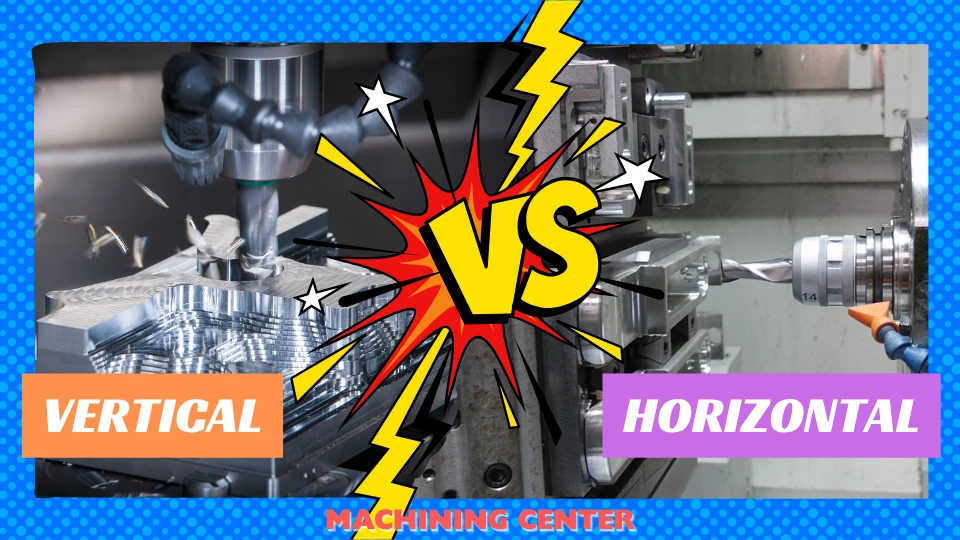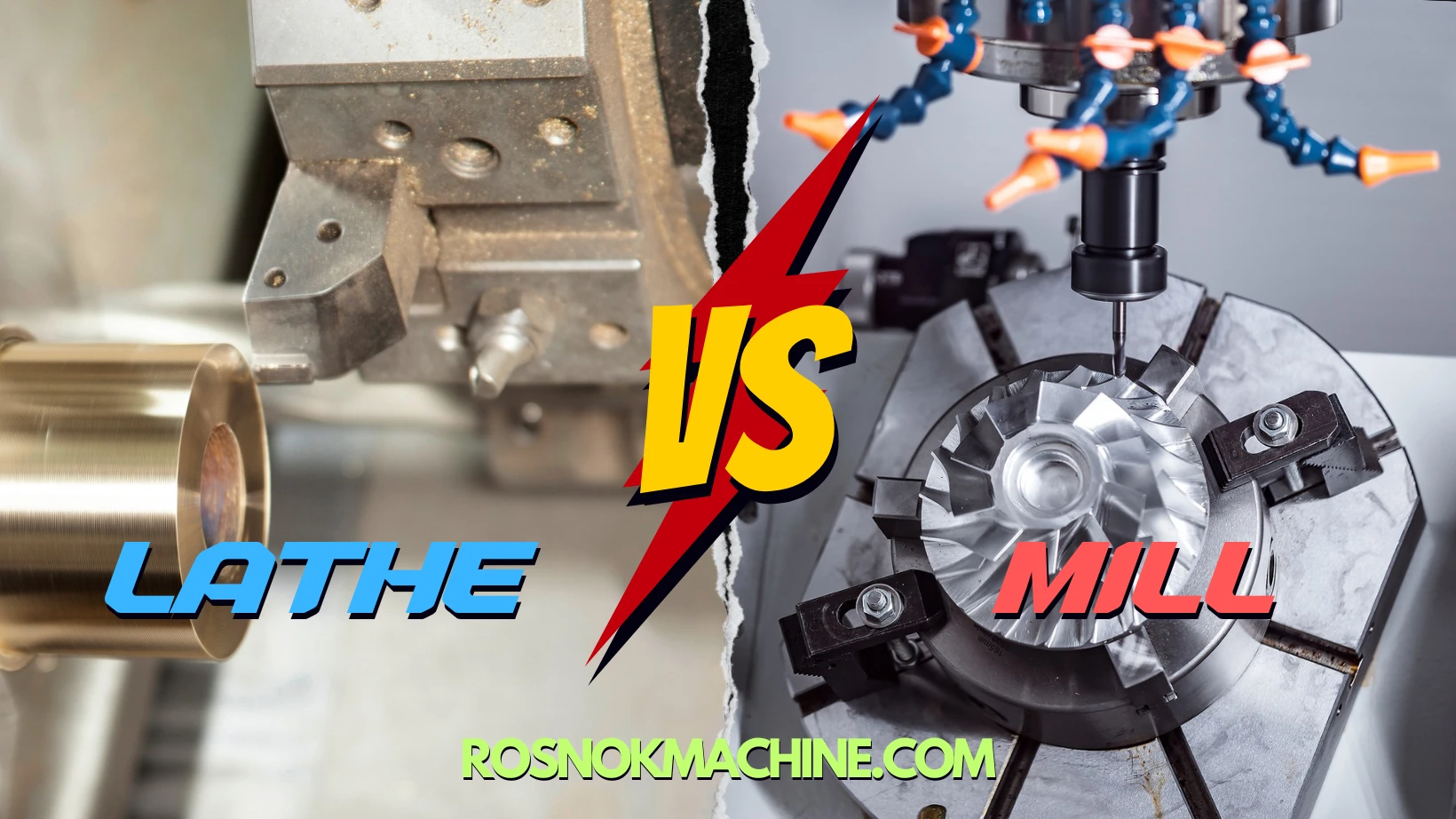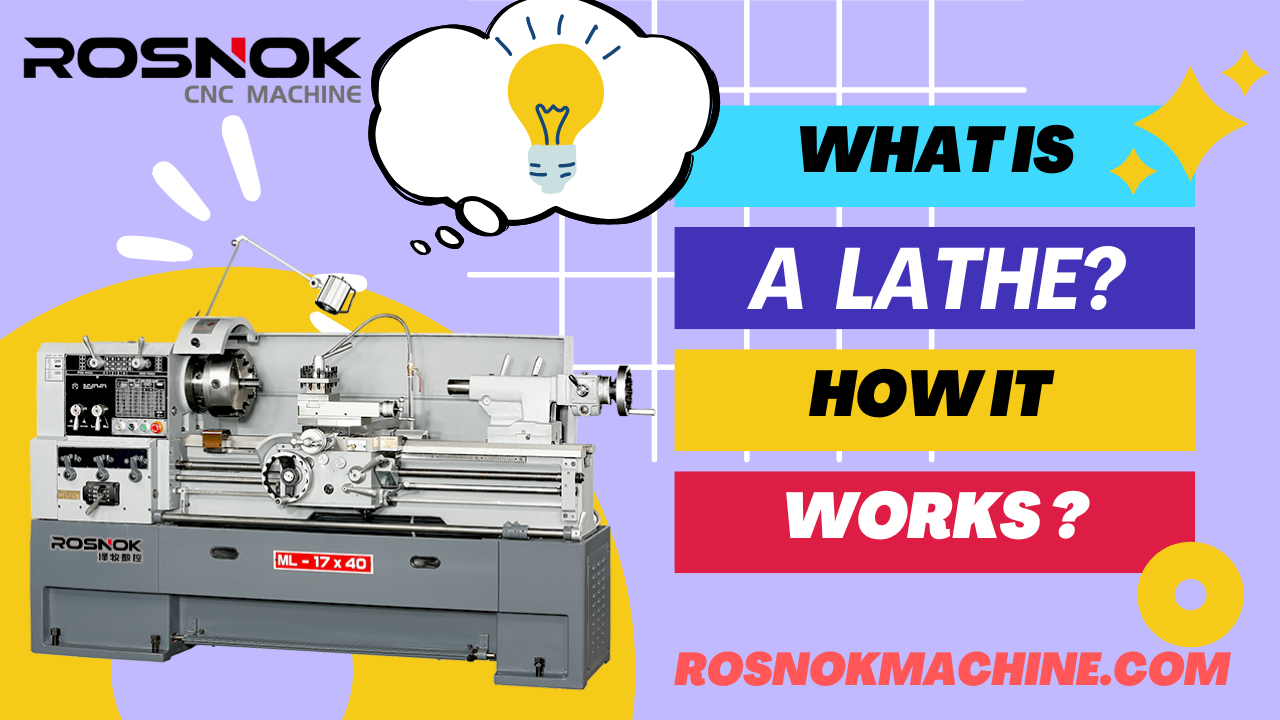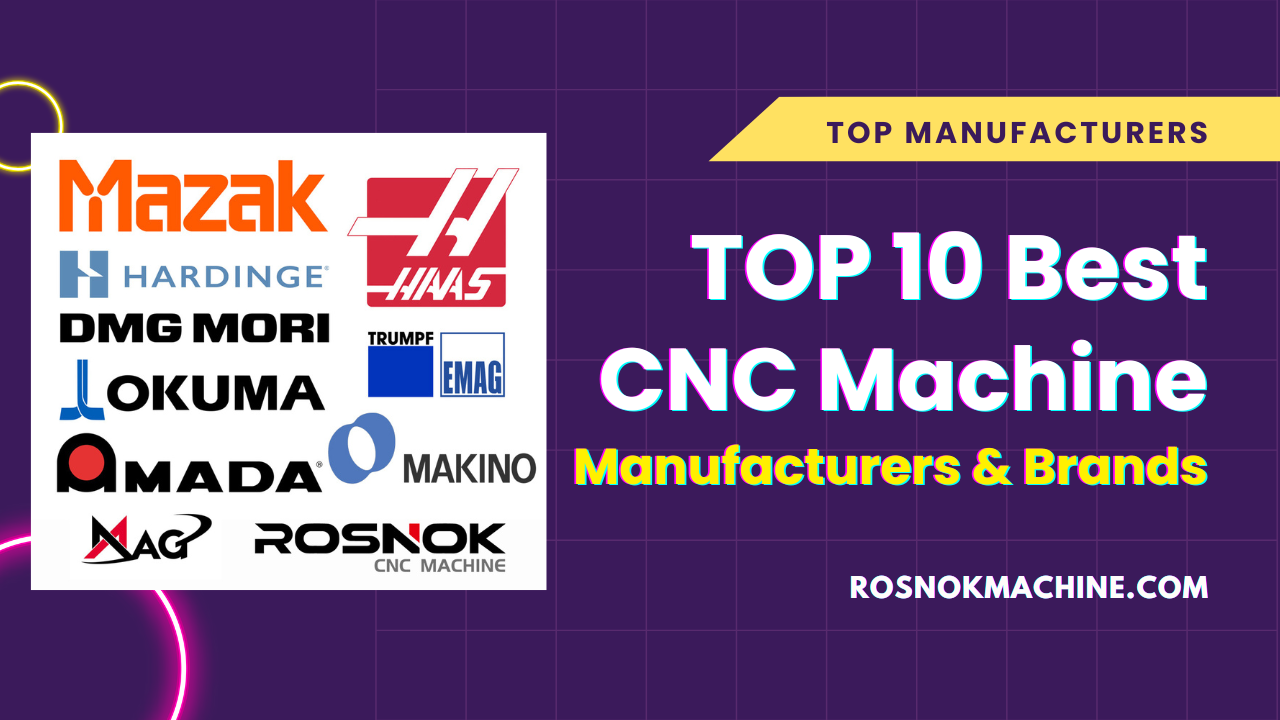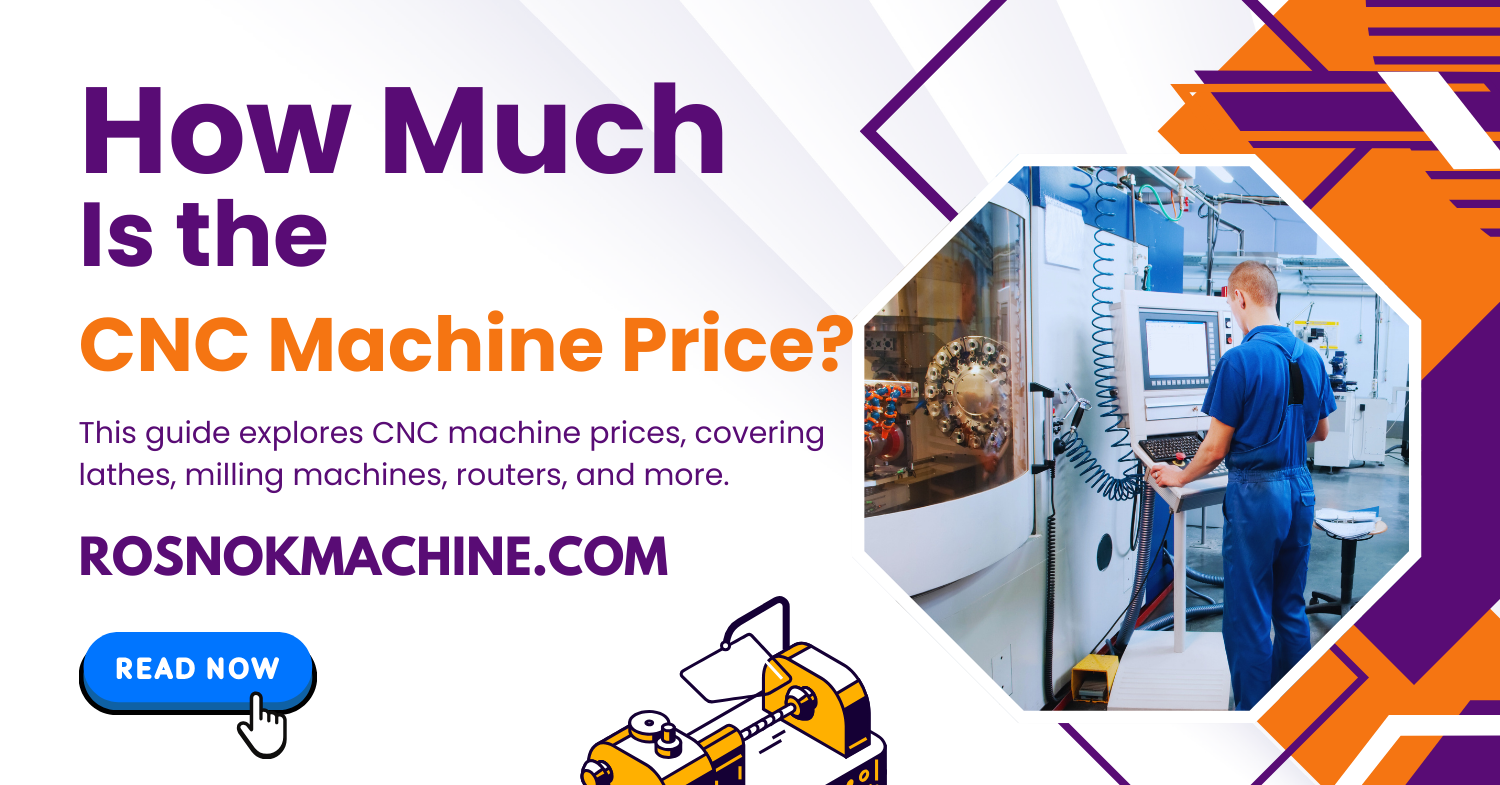Have you ever wondered how vertical and horizontal machining centers differ? How does machine structure affect part capability? Which type delivers better efficiency and cost-effectiveness? Where does each excel in applications and maintenance? Most importantly, what key factors should you know before choosing a machining center?
Vertical Machining Centers (VMCs) feature a vertical spindle and flat table, capable of machining a wide range of complex and precision parts, including molds, contoured surfaces, and intricate components. Horizontal Machining Centers (HMCs) use a horizontal spindle with a rotary table, excelling at multi-sided machining of large, heavy, and complex box-type parts with superior chip evacuation and stability. The core distinction lies in their structural design: VMCs offer versatility and accessibility, while HMCs provide enhanced efficiency for demanding, multi-surface and heavy-duty applications.
Continue reading this article to explore the key differences between vertical and horizontal machining centers. Cover structural design, machining capabilities, part compatibility, typical applications, cost and space requirements, maintenance features, automation potential, and selection advice.
Introduction: Vertical vs Horizontal Machining Center
Choosing the right machining center is a key decision for any manufacturer looking to improve production efficiency and quality. The difference between horizontal and vertical machining center designs goes far beyond the position of the spindle. It impacts the type of parts you can produce, the machining strategies you apply, and the overall workflow in your shop. Understanding the vertical vs horizontal machining center comparison helps business owners and engineers make smarter investments aligned with their production goals. By gaining this insight, you can refine your production strategy and ensure every equipment investment drives measurable performance and competitive advantage.
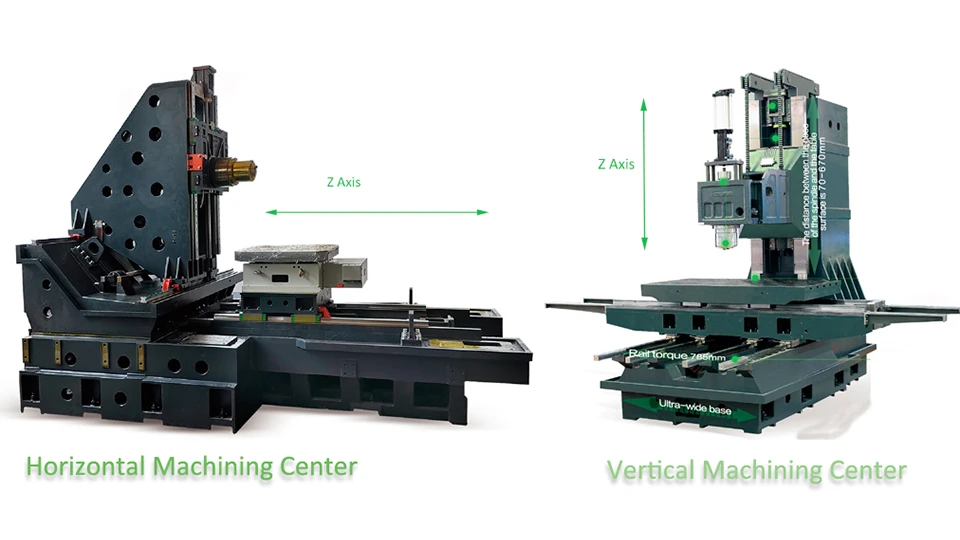
What Are Vertical and Horizontal Machining Centers?
A machining center is a type of CNC machine tool designed for highly precise and automated metal cutting operations. Vertical and horizontal machining centers both perform milling, drilling, tapping, and contouring, but they differ in spindle orientation and machine layout. This difference affects how workpieces are positioned and how efficiently various machining tasks are completed. Understanding the difference between horizontal and vertical machining center configurations is essential for selecting the right equipment for your production needs.
What is a Vertical Machining Center (VMC)?
A vertical machining center features a vertically oriented spindle, which moves up and down along the Z-axis. The worktable beneath the spindle moves in the X and Y axes, positioning the workpiece for precise cutting. This structure makes vertical machining centers ideal for working on flat surfaces and complex contoured shapes. They are widely used in industries such as mold making, electronics, medical devices, and general precision parts manufacturing. Typical parts include molds, housings, precision enclosures, and small to medium-sized components with detailed geometries. Vertical and horizontal machining center designs both offer versatility, but VMCs are often favored for ease of setup and accessibility.
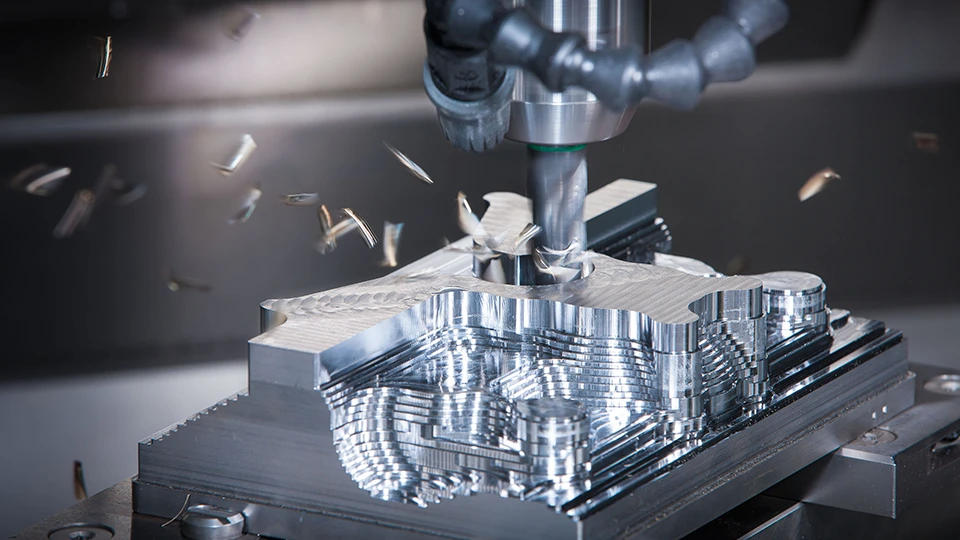
What is a Horizontal Machining Center (HMC)?
A horizontal machining center is built around a horizontally oriented spindle, aligned parallel to the floor. The workpiece is typically mounted on a rotary table or tombstone fixture, enabling multi-sided machining in a single setup. This configuration is especially effective for large, heavy, and box-shaped components that require multiple faces to be machined. Horizontal machining center vs vertical designs excel in chip evacuation, stability, and automation potential, making them ideal for high-volume production environments. Industries such as automotive, aerospace, and heavy equipment manufacturing rely on HMCs to produce engine blocks, valve bodies, structural components, and complex assemblies with tight tolerances.
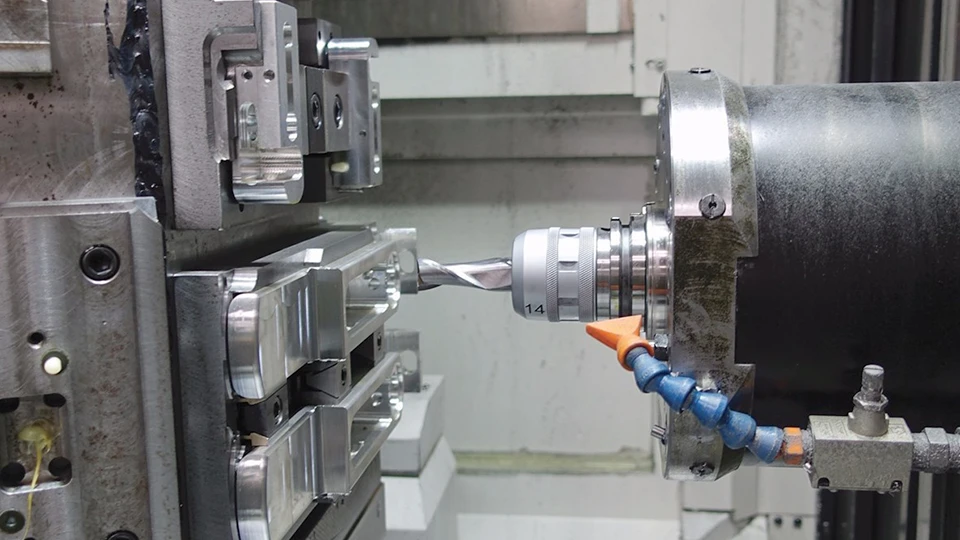
Structural Differences Between Vertical and Horizontal Machining Centers
The design of a machining center determines its capabilities, efficiency, and ideal applications. A vertical vs horizontal machining center differs fundamentally in spindle orientation, worktable configuration, and structural rigidity. These differences shape the machining process and influence which machine is best suited for specific types of parts. Understanding the structural variations between vertical and horizontal machining centers helps manufacturers align equipment choice with production requirements.
Spindle Orientation and Impact on Machining
The most visible difference between horizontal and vertical machining center designs is spindle orientation. A vertical machining center (VMC) has a spindle that moves vertically along the Z-axis, allowing the cutting tool to approach the workpiece from above. This is ideal for top-down machining and enables easier handling of flat and contoured surfaces.
In contrast, a horizontal machining center (HMC) uses a spindle oriented parallel to the floor. This allows the tool to cut horizontally, often in combination with a rotary table. The horizontal orientation enhances chip evacuation and enables more stable machining of large and heavy components. It also supports efficient multi-face machining, as the spindle can reach different sides of the part with minimal repositioning.
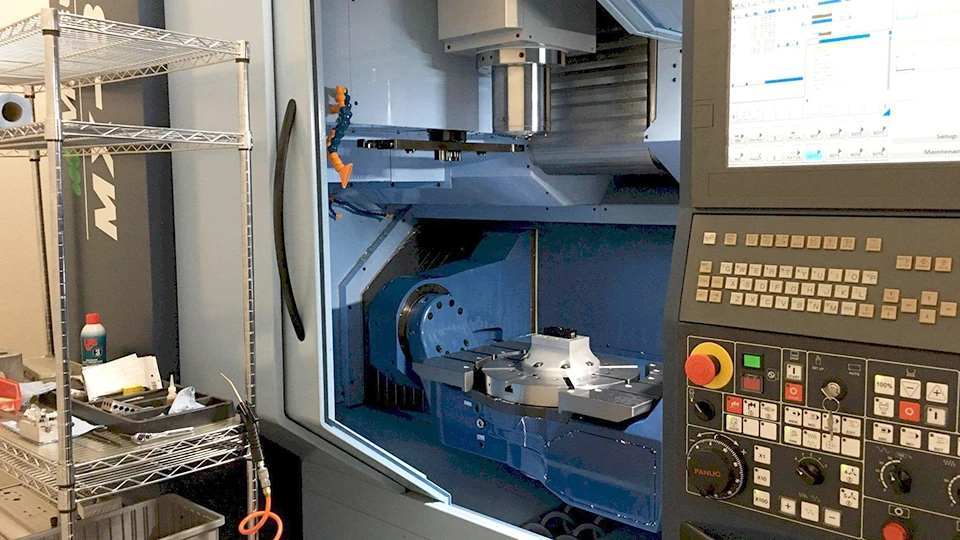
Worktable Design and Part Fixturing
Worktable design plays a key role in how parts are mounted and machined. A VMC typically features a fixed flat table where the workpiece is secured in place. Operators must reposition or re-clamp the part when machining multiple faces, which can affect accuracy and efficiency in complex jobs.
An HMC is equipped with a rotary table or a tombstone fixture that allows for continuous rotation of the workpiece. This design supports multi-sided machining in a single setup, reducing handling time and increasing precision. The ability to machine several faces without manual repositioning makes the horizontal machining center vs vertical choice especially advantageous for complex or box-shaped parts.
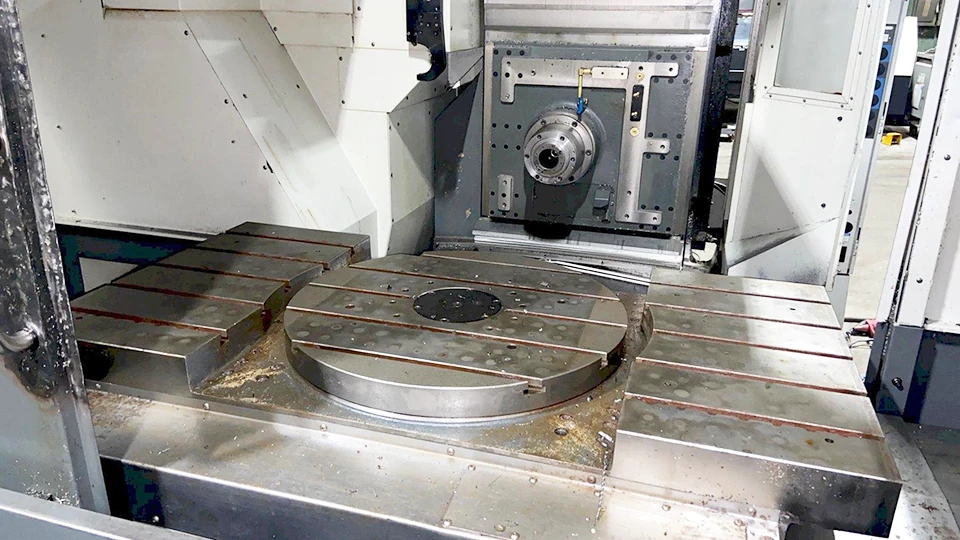
Machine Rigidity and Stability
Machine rigidity directly impacts machining accuracy, surface finish, and tool life. Horizontal machining centers are generally built with a more robust and symmetrical structure. This gives them higher rigidity and stability, making them better suited for heavy cutting operations, deep cavity milling, and large part machining.
Vertical machining centers are designed with flexibility and accessibility in mind. They are often lighter and more compact, which supports agile and versatile machining of smaller and medium-sized components. While modern VMCs can handle demanding tasks, the inherent rigidity of HMCs provides a clear advantage for sustained heavy-duty machining.
Machining Capabilities of Vertical vs Horizontal Machining Centers
The machining capabilities of a vertical vs horizontal machining center differ in ways that directly impact production efficiency, part quality, and process flexibility. While both machine types are capable of high-precision milling, drilling, and contouring, their design influences how they handle multi-sided machining, chip evacuation, and automation. Understanding these differences between horizontal and vertical machining center performance helps manufacturers select the right solution for their workflow.
Multi-Sided Machining Efficiency
Multi-sided machining is a key area where horizontal machining centers (HMCs) demonstrate clear advantages. An HMC typically uses a rotary table or tombstone fixture, allowing multiple faces of a part to be machined in a single setup. This minimizes repositioning, reduces setup time, and improves part consistency.
In contrast, a vertical machining center (VMC) generally requires manual repositioning or re-clamping when machining different faces of a workpiece. Each repositioning step introduces potential alignment errors and adds to the total machining time. For complex parts that demand high efficiency and precise multi-face machining, the horizontal machining center vs vertical choice often favors HMCs.
Surface Quality and Chip Evacuation
Effective chip evacuation is critical for maintaining surface quality and machining stability. Horizontal machining centers have a natural advantage due to their spindle orientation and gravity-assisted chip flow. Chips fall away from the cutting area, reducing recutting and heat buildup, which in turn enhances surface finish and tool life.
Vertical machining centers, by comparison, often experience chip accumulation on the workpiece and cutting area. This requires more frequent manual cleaning or the use of specialized coolant and air blast systems to clear chips. While modern VMCs can achieve excellent surface quality, the superior chip evacuation of HMCs supports more consistent results, particularly in deep cavity or heavy material removal operations.
Automation and Unattended Operation Potential
Automation is increasingly important in modern manufacturing. The structural design of HMCs makes them especially well-suited for integration with advanced automation systems. Features like automatic pallet changers and large tool magazines enable continuous, unattended machining of complex parts. This capability reduces labor costs and maximizes machine utilization.
Vertical machining centers can also be automated, typically through robotic part handling and external pallet systems. However, due to their single-face machining nature, achieving full multi-sided automation is more complex. Still, for applications with frequent part changes and shorter runs, a well-configured VMC can provide significant automation benefits. Choosing between vertical and horizontal machining center solutions depends on the required level of unattended operation and production volume.

Part Compatibility and Typical Applications
Choosing between a vertical vs horizontal machining center depends greatly on the type of parts you produce and the industries you serve. Each machine design offers distinct strengths that align with specific component geometries and production requirements. By understanding the difference between horizontal and vertical machining center part compatibility, manufacturers can better match equipment to their shop’s needs.
Typical Parts for Vertical Machining Center
Vertical machining centers are highly versatile and particularly well-suited for machining flat and contoured surfaces. They are a preferred choice for producing precision molds, injection mold tooling, die-casting molds, and detailed components with complex curves. VMCs also excel at machining housings, enclosures, and electronic component frames where accessibility from the top is advantageous.
Industries such as mold and die making, consumer electronics, medical device manufacturing, and precision engineering rely heavily on VMCs. In a typical VMC production environment, you will find mold shops, electronics assembly workshops, and job shops producing small and medium-sized high-precision parts. The flexibility of vertical machining centers supports both prototyping and short-to-medium batch production across a wide range of industries.
Typical Parts for Horizontal Machining Center
Horizontal machining centers shine when it comes to machining large, heavy, and box-shaped components. Common applications include automotive engine blocks, transmission cases, hydraulic valve bodies, and large structural parts. The horizontal orientation and rotary workholding capabilities of HMCs enable efficient multi-face machining of complex assemblies.
Industries such as automotive manufacturing, aerospace, heavy equipment, and energy sectors depend on HMCs for high-volume and precision machining of demanding components. A typical HMC production setting features automotive powertrain machining lines, aerospace structural part machining cells, and large-component machining workshops in the construction and mining equipment industry. The horizontal machining center vs vertical approach is especially effective when stability, chip control, and multi-sided machining are top priorities.
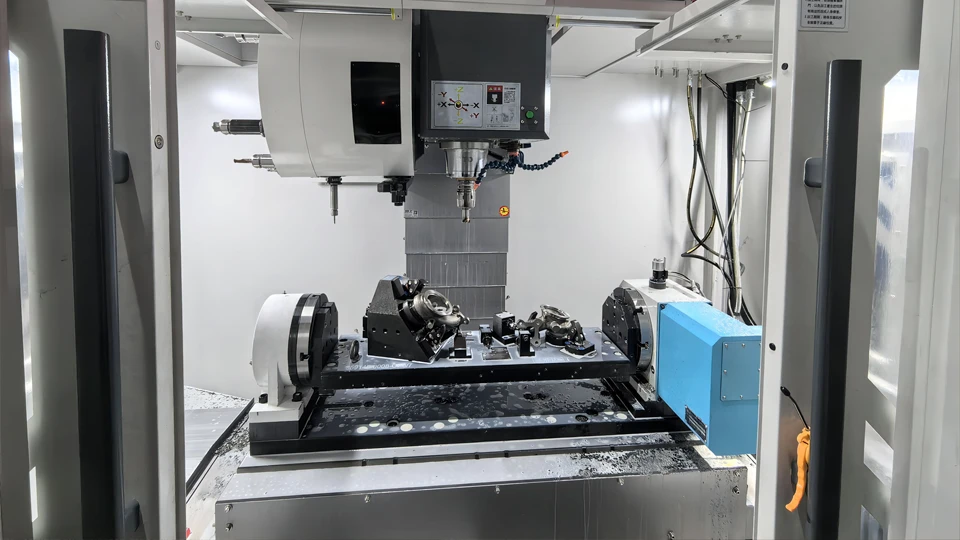
Cost and Space Considerations
When evaluating vertical vs horizontal machining center options, it is essential to consider not only machining capabilities but also the financial and spatial impact on your operation. The difference between horizontal and vertical machining center investment extends beyond the initial purchase price to include floor space requirements and long-term total cost of ownership (TCO). Carefully weighing these factors ensures a better return on investment and more efficient use of shop resources.
Initial Machine Cost Comparison
A vertical machining center is generally more affordable than a horizontal machining center. The simpler construction, compact design, and lower automation requirements make vertical machining centers an attractive choice for smaller shops or manufacturers with limited budgets. Entry-level vertical machining centers are widely available and can handle a broad range of precision tasks.
Conversely, a horizontal machining center features a more complex structure, including a rotary table and the potential for integrated automation systems such as pallet changers. This results in a higher upfront cost but also offers greater productivity for large-scale and multi-sided machining. For manufacturers focused on high-volume production or machining large, complex parts, the investment in a horizontal machining center can deliver superior long-term value through increased throughput and reduced labor costs.
Floor Space Requirements
Floor space is another critical factor when selecting between a vertical machining center and a horizontal machining center. Vertical machining centers are typically more compact and require less shop floor area, making them suitable for smaller workshops or facilities with limited space.
In contrast, a horizontal machining center usually demands more space due to its larger frame and additional components such as pallet changers and automation equipment. Facilities planning to install horizontal machining centers must account for this added space requirement to ensure efficient workflow and safe operation. The horizontal machining center vs vertical trade-off often involves balancing space availability with production capacity needs.
Maintenance and Operating Costs
Ongoing maintenance and operating costs play a significant role in determining the total cost of ownership for any machining center. Vertical machining centers generally have lower maintenance requirements due to their simpler design. Routine tasks such as lubrication, cleaning, and alignment checks are straightforward, and replacement parts are typically more affordable and readily available.
Horizontal machining centers, while highly productive, involve more complex maintenance procedures. Components such as rotary tables, pallet systems, and larger spindle assemblies require regular inspection and upkeep. Additionally, the energy consumption of a horizontal machining center may be higher due to its more powerful drives and integrated automation features. When calculating long-term operating costs, manufacturers should consider these factors to ensure their investment aligns with their budget and production goals.
Routine Maintenance Differences Between Vertical and Horizontal Machining Centers
Maintenance complexity is an important factor when evaluating vertical machining center vs horizontal machining center options. Both machine types require routine care to maintain accuracy and reliability, but the scope of maintenance varies and should influence your selection process.
A vertical machining center typically involves straightforward maintenance tasks, such as lubricating linear guides and ball screws, removing chips from the work area, and cleaning filters and sensors. Precision checks, including spindle runout and axis calibration, are also required at regular intervals. The simpler design of a vertical machining center generally results in lower maintenance costs and easier upkeep.
A horizontal machining center, while offering greater machining efficiency, demands more extensive maintenance. In addition to standard lubrication and cleaning, operators must regularly service rotary tables, pallet changers, and chip management systems. Chip accumulation can still occur in certain materials, and automated systems require consistent monitoring to maintain performance.
Common maintenance challenges for both machine types include chip buildup, lubrication system failures, and geometric accuracy deviation due to wear or thermal effects. Implementing a preventive maintenance schedule and training staff on best practices help minimize downtime and protect your investment. Understanding these maintenance differences between horizontal and vertical machining center designs ensures your choice aligns with available shop resources and operational capabilities.

How to Choose the Right Machining Center for Your Needs
Selecting the most suitable machining center is a strategic decision that directly affects production efficiency, quality, and return on investment. After understanding the difference between horizontal and vertical machining center designs, manufacturers must align their choice with their specific production goals, part requirements, and operational constraints. This section provides practical guidance to help you make an informed selection between a vertical machining center and a horizontal machining center.
Key Questions to Ask Before Choosing
Before investing in a new machining center, it is essential to evaluate your production needs thoroughly. Asking the following questions can help you determine whether a vertical machining center or a horizontal machining center is the better fit:
- What is the shape and size of the typical parts you will machine?
Large, box-shaped, or multi-sided parts often benefit from the capabilities of a horizontal machining center, while smaller or more intricate components may be well-suited for a vertical machining center. - How complex are the parts to be machined?
Parts requiring multi-face machining or deep cavity cutting may lean towards a horizontal machining center. For parts with complex contours or detailed surface features, a vertical machining center can be highly effective. - What are your production volume and capacity goals?
High-volume, automated production lines favor horizontal machining centers due to their superior automation integration. Vertical machining centers are more flexible for small to medium batch production or high-mix environments. - What is your budget for initial investment and long-term operation?
A vertical machining center generally requires a lower upfront investment and has simpler maintenance needs. A horizontal machining center, while more costly, offers greater throughput for demanding production environments. - How much floor space is available in your facility?
Space constraints may favor the more compact footprint of a vertical machining center. Horizontal machining centers typically require more room to accommodate pallet changers and automation systems. - What level of automation and unattended operation do you require?
If your production strategy emphasizes lights-out machining and high efficiency, the horizontal machining center provides clear advantages. Vertical machining centers can also be automated but require more custom integration for multi-sided work.
By systematically evaluating these questions, you can align your machine choice with both current production needs and future growth plans.
Summary Table: Vertical Machining Center vs Horizontal Machining Center at a Glance
| Key Aspect | Vertical Machining Center | Horizontal Machining Center |
|---|---|---|
| Spindle Orientation | Vertical (top-down cutting) | Horizontal (side cutting with rotary table) |
| Part Compatibility | Small to medium parts, complex contours, flat parts | Large, box-shaped parts, multi-sided components |
| Multi-Sided Machining Efficiency | Requires repositioning | Multi-face machining in a single setup |
| Chip Evacuation | Manual cleaning often required | Superior chip evacuation by gravity |
| Automation Potential | Flexible, but less suited for high-volume automation | Highly suited for integrated automation systems |
| Initial Investment Cost | Lower | Higher due to complex structure and automation |
| Floor Space Requirements | Compact footprint | Requires more space for pallet systems and automation |
| Maintenance Complexity | Lower, simpler routine tasks | Higher, more components to maintain |
| Typical Applications | Mold making, electronics, precision components | Automotive, aerospace, heavy equipment, large parts |
This comparison highlights the core differences between a vertical machining center and a horizontal machining center, enabling you to make an informed, strategic choice that matches your manufacturing objectives.
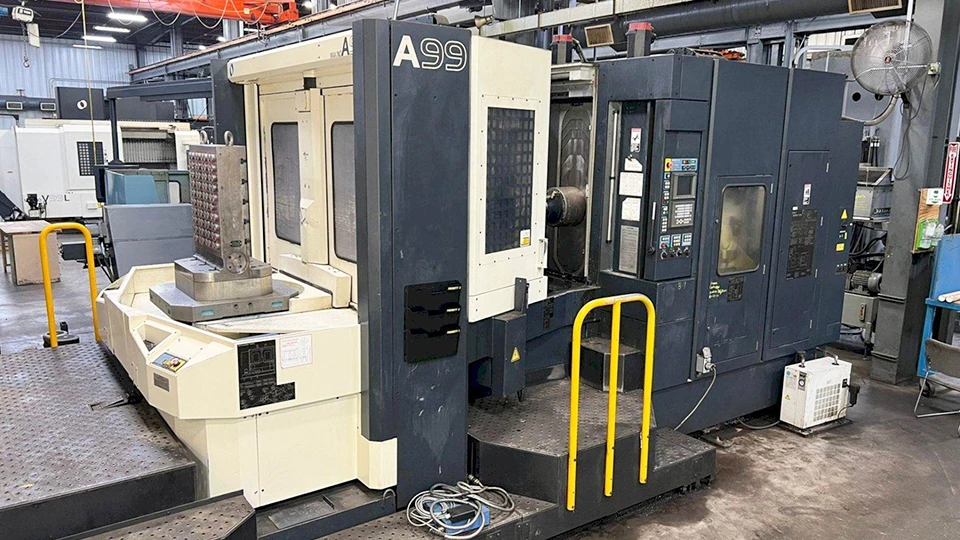
Conclusion
Understanding the differences between a vertical machining center and a horizontal machining center is essential for anyone involved in modern machining or manufacturing. This article has explored the core distinctions between horizontal and vertical machining center designs, including structural characteristics, machining capabilities, part compatibility, operational costs, and maintenance considerations. By clearly grasping these differences, manufacturers, engineers, and industry professionals can better appreciate how each type of machining center fits into various production scenarios.
At Rosnok, we are committed to advancing knowledge and innovation in CNC machining. With deep expertise in both vertical machining centers and horizontal machining centers, our engineering team continually develops solutions tailored to diverse industry needs. Whether supporting precision part manufacturing or enabling efficient production of complex assemblies, Rosnok’s machining technologies embody the depth of understanding required to meet today’s evolving industrial demands.
